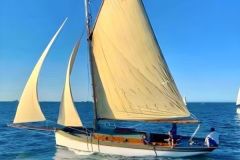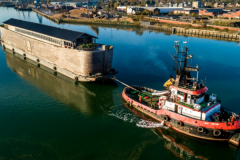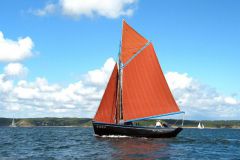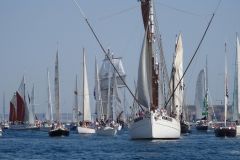The largest wooden sailboat in the world
Götheborg of Sweden is a replica of an 18th century cargo frigate, called Indiaman, of the Swedish East India Company. After its launch in 1738, it is the largest wooden sailing ship in the world. It ran aground on rocks before reaching the city of the same name in 1745 on its third return from China, without causing any injury.
Redraw plans and find the construction method
In 1984, following the discovery of the wreck, the idea of rebuilding a similar boat began to take shape. In 1992, it was decided to rebuild the three-masted square-rigged ship identically at the same shipyard, Terra Nova in Gothenburg. Without the original drawings, but with the tools, methods and building materials of the time, while taking into account today's safety requirements, many years were spent finding the way to build this replica. In total, the project cost about $40 million, with 40 percent coming from public funds and the rest from sponsors. Over the years, the ship has been entrusted to two foundations. The first funded the maiden voyage to China. In 2010, a non-profit foundation was established to manage the ship. It is operated by the Swedish East India Company.
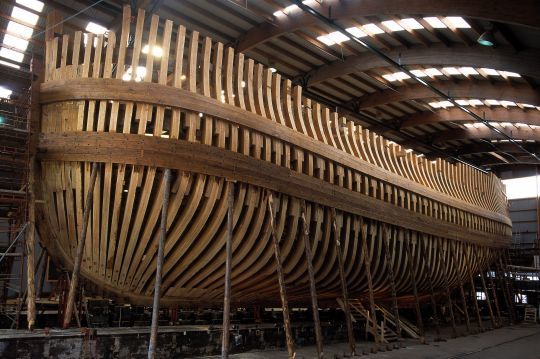
Construction began in 1995
The keel of the ship was installed on June 11, 1995 after several years of preparation. The elements used in the keel are the largest pieces present in the hull. They are oak logs weighing about ten tons before being cut. The construction started one year later. In total, 4000 m3 of oak and pine wood are used to build the hull.
It takes two years to make the ribs and spars. Each board is steamed for several hours to soften it. They are then installed next to each other with large clamps before being re-hardened. To ensure the watertightness of the hull, each plank has a joint with tarred linen. This also ensures greater strength and solidity. A total of 16 km of joints are used in the deck and planking. The exterior was nailed with thin planks of wood and pine and covered with antifouling.
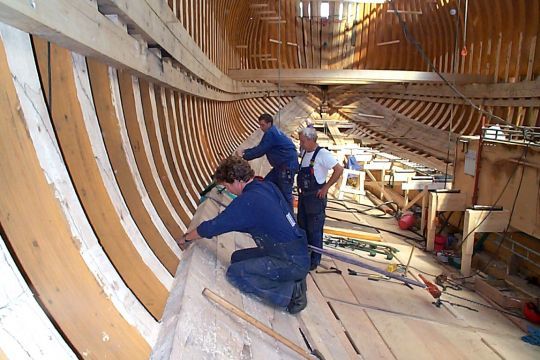
An inaugural navigation in the footsteps of its ancestor
Götheborg of Sweden was launched on June 6, 2003. It undertook its first navigation on August 6, 2005 for a maiden voyage to China, like the former Göteborg, without following the same route. This voyage of about 18 months saw the crew of 80 people changed during the stopovers. It made its return to Sweden on June 9, 2007. Since then, in the manner of the Hermione in France, it undertakes many voyages with professional and volunteer crew.
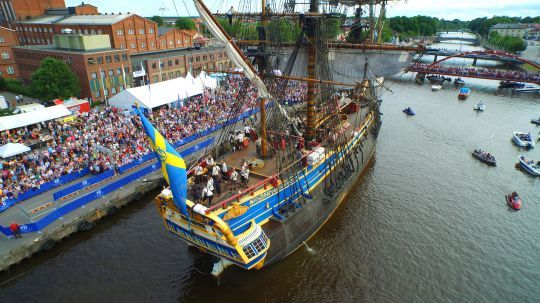

Preserve historic plans while combining modernity and safety
This 47 m long and 11 m wide sailing ship weighs 788 tons. The spaces used by the 18th century crew were recreated as faithfully as possible to the historical ones, but gained in height under the head, the sailors of the time being smaller than today. The green color of the furniture comes from a cutting board found during the excavation. The crew quarters and most of the modern technology are placed in the space that was then the cargo hold. A lot of effort was put into hiding all the pipes, cables and scuppers.
In total, the Götheborg has 20 cabins and 42 berths. Aft of the galley are two crew quarters in which the sailors sleep either in hammocks or in bunks. The captain's and non-commissioned officer's cabins, as well as the permanent crew, are located aft, below the main deck. On this same deck are the cannons, but also the living areas of the crew. During the voyages, this common space allows the whole crew to meet and have dinner. The kitchen is modern and compact with all the necessary equipment to prepare meals for at least 80 people. A laundry room has also been integrated into the ship.
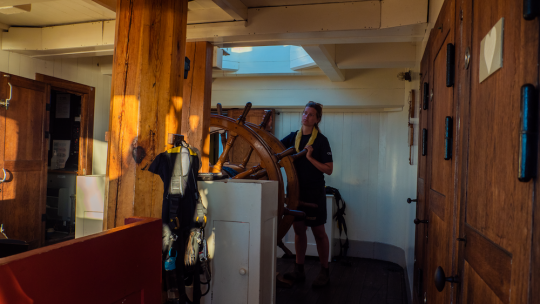
If the ship is as close as possible to its wrecked anchor, it must nevertheless comply with modern safety standards. Thus, the engine room is equipped with generators, thrusters, fuel and water tanks, water maker, fire extinguishers, heating and air conditioning or even bilge pumps capable of pumping up to 500 tons per hourâeuros¦ A monitoring system permanently analyzes 600 sports on board. It can be used to turn on pumps, open valves, regulate fans, etc. Hour meters are installed on the various equipments, so that during trips data are collected. The most critical temperature, pressure, fuel and water levels are read and recorded every four hours, 24 hours a day. Everything is meticulously documented, which helps the technical staff to monitor and maintain the equipment in the best possible way.
In the same way as for safety, if old navigation instruments such as octants and a Dutch logbook were studied, the Göteborg possesses all the modern electronics: GPS, radar, radio, satelliteâeuros¦ Two 404 kW engines associated with a 36,000-liter fuel tank mandatory to navigate today were installed.
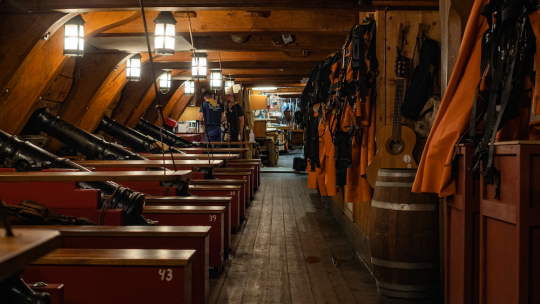
A strictly identical rig
Concerning the rigging, Götheborg of Sweden, it is an exact replica of the original one from the 18th century. It has 26 sails with a total area of 1 964 m². The regular set of sails is composed of 18 sails with a total surface of 1 550 m². At that time the sails were made of hemp or linen, but the latter fabric was chosen, as linen is still produced today. The largest sail on board is the main topsail with an area of nearly 250 m2. The ropes of the running and standing rigging weigh 20 tons, and all the ropes and sails are operated by human power only.






